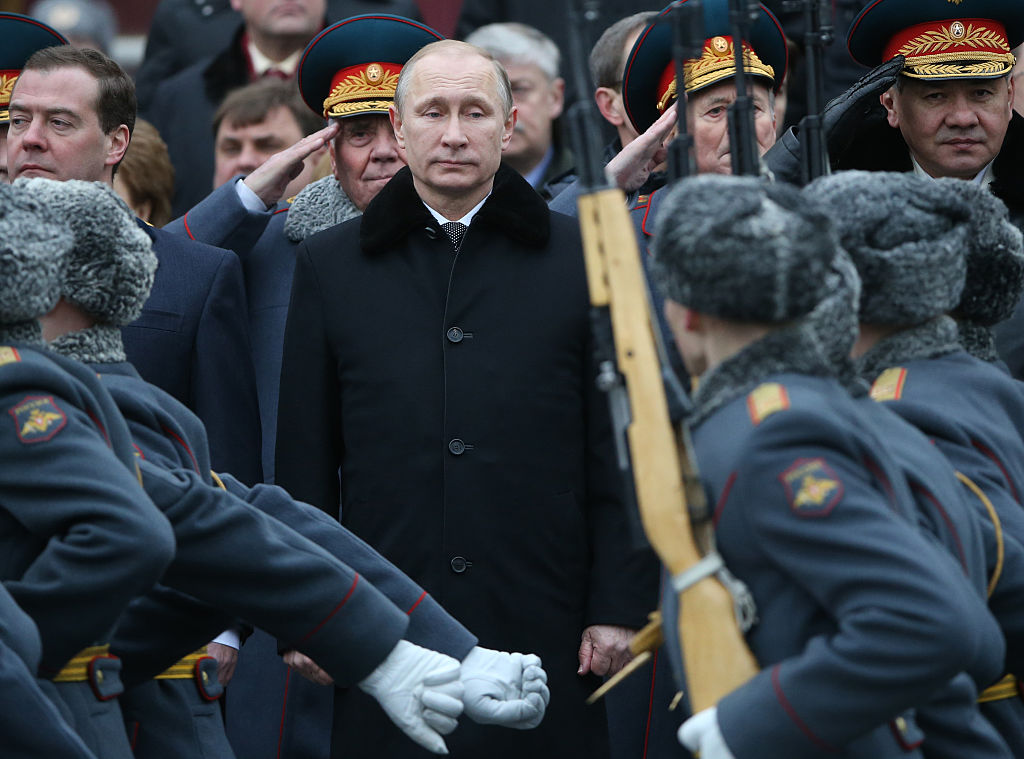
When Russia’s military crossed the Ukrainian border on 24 February 2022 to march on Kyiv, they were expecting an easy victory. Instead, they were held back by Ukraine’s highly motivated defence forces, suffered humiliating tactical defeats, got bogged down in logistical problems and had to pull back within a month. How could the world’s fourth largest military force—and one with extensive recent battlefield experience—have made such an enormous miscalculation?
In Putin’s wars, Mark Galeotti sets out to answer that question and many others about Russia’s armed forces. Galeotti is a well-known scholar of Russian political and security affairs, on which he has published widely, and an honorary professor at University College London’s School of Slavonic and East European Studies.
Galeotti’s ambitious book could hardly be more timely. He provides the reader with a comprehensive overview of the wars waged by Russia from the 1990s to the present day, including the two Chechen wars, Russia’s incursion into Georgia, its Syria campaign, and the different stages of its war of aggression on Ukraine, from the ‘little green men’ who took over Crimea in 2014 to the current full-scale invasion.
With decades of experience observing Russia, Galeotti provides a warts-and-all account of its military’s strengths, weaknesses and future prospects.
Following the collapse of the Soviet Union, Russia’s armed forces were in disarray, underfunded, corrupt, inefficient and in urgent need of reform. As a result, the first Chechen campaign (1994–1996) was an abject failure. The second Chechen war (1999–2000) drew lessons from the first and ended in an uneasy peace, leaving the Chechen warlord Ramzan Kadyrov in power and heavily subsidised by Moscow.
This was followed by Russia’s intervention in Georgia (2008), which was intended to rein in the independent-minded president Mikheil Saakashvili and remind other former Soviet republics not to cosy up to the West. Russia’s intervention in Syria’s brutal civil war, again, was meant not only to support its long-time ally president Bashar al-Assad but to remind the US of Russia’s stake in the region.
From Moscow’s perspective, the invasion of Crimea—taking advantage of Russia’s established military presence and a largely Russian-speaking population—was a success. This may have misled the Kremlin to assume that taking over the rest of Ukraine would be as easy. But it also prompted Ukraine to revamp its military in anticipation of further aggression.
However, Galeotti’s book is about much more than simply Russia’s recent conflicts. He discusses in detail the uphill struggle of successive defence ministers to reorganise Russia’s top-heavy and outdated armed forces. Putin’s first defence minister, Sergei Ivanov (2001–2007), came from the KGB and tried hard to convince the generals of the benefits of a contract army over mass conscription.
Ivanov was followed by Anatoly Serdyukov (2007–2012), who had headed Russia’s tax service. Serdyukov brought fiscal efficiency to military planning and purged the armed forces’ senior ranks, but was himself brought down by a corruption scandal.
The current minister, Sergei Shoigu, is the most successful of the three. Politically savvy, he has implemented sweeping reforms, while skilfully using his position to cultivate his public image. Shoigu is the only member of Putin’s inner circle who comes from neither the KGB, Putin’s bailiwick, nor his hometown, Saint Petersburg. Among other achievements, Shoigu is credited with giving the dog-loving president a black Labrador, which Putin famously used to intimidate German chancellor Angela Merkel at a summit meeting. Shoigu is widely considered a potential successor to Putin.
The book includes a fascinating chapter on Russia’s military expenditure, much of which is buried in non-military budget lines. In Galeotti’s assessment, on a purchasing-power-parity basis, Russia has the world’s fourth largest military budget, behind the US, China and India, but ahead of the United Kingdom. Galeotti notes that Russia’s indiscriminate arms exports, second in volume only to those of the US, are one of its few economic success stories.
Russia’s military is centred around its huge army, with tanks and artillery a comparative strength. Logistics, again, has been Russia’s Achilles’ heel, as evidenced by its failed assault on Kyiv. Galeotti reminds us that Russia’s railways operate on a different gauge from almost all of Western Europe, which would make it difficult for Russia to sustain combat operations far from its borders. The book also reviews Russia’s air force and navy, which are predominantly regional, its Spetznaz special forces, and its nuclear arsenal.
Looking to the future, the words ‘hybrid’, ‘ambiguous’, ‘non-linear’ and ‘political’ figure frequently in Galeotti’s narrative. Russia has invested extensively in information warfare, including electronic jamming and spoofing, and in drones.
Due to the poor state of its armed forces, Russia has relied heavily on mercenaries, in particular the Wagner Group, a private military company. While giving Russia some deniability regarding war atrocities, the mercenaries have posed a constant threat to Russia’s military chain of command, and even to Putin’s authority.
The situation came to a head in late June, when the Wagner Group’s leader Yevgeny Prigozhin staged a rebellion against Moscow. Russia quickly brought the insurrection under control, consigning Prigozhin to Belarus, announcing steps to disarm the Wagner Group and integrate its soldiers into the mainstream armed forces, and reorganising its security forces. But the episode left Putin severely weakened.
Putin’s wars is essential reading for defence and security professionals. However, its engaging style also makes it an excellent read for generalists.

